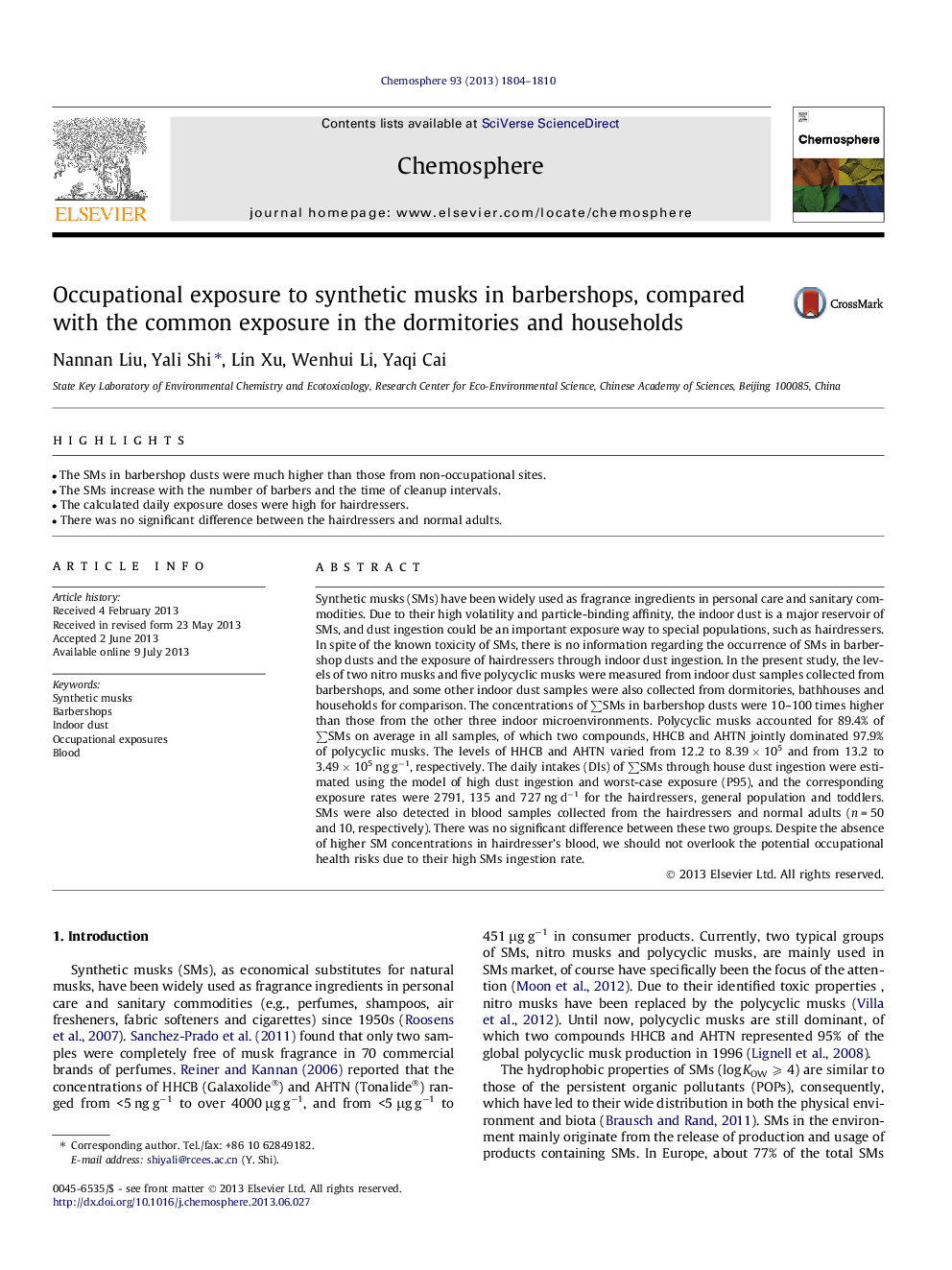| کد مقاله | کد نشریه | سال انتشار | مقاله انگلیسی | نسخه تمام متن |
|---|---|---|---|---|
| 6310085 | 1307460 | 2013 | 7 صفحه PDF | دانلود رایگان |
عنوان انگلیسی مقاله ISI
Occupational exposure to synthetic musks in barbershops, compared with the common exposure in the dormitories and households
ترجمه فارسی عنوان
قرار گرفتن در معرض مصارف مصنوعی در آرایشگاه ها، در مقایسه با قرار گرفتن در معرض رایج در خوابگاه ها و خانوارها
دانلود مقاله + سفارش ترجمه
دانلود مقاله ISI انگلیسی
رایگان برای ایرانیان
کلمات کلیدی
مسلم مصنوعی، آرایشگاه ها، گرد و غبار داخلی، قرار گرفتن در معرض شغلی، خون،
موضوعات مرتبط
علوم زیستی و بیوفناوری
علوم محیط زیست
شیمی زیست محیطی
چکیده انگلیسی
Synthetic musks (SMs) have been widely used as fragrance ingredients in personal care and sanitary commodities. Due to their high volatility and particle-binding affinity, the indoor dust is a major reservoir of SMs, and dust ingestion could be an important exposure way to special populations, such as hairdressers. In spite of the known toxicity of SMs, there is no information regarding the occurrence of SMs in barbershop dusts and the exposure of hairdressers through indoor dust ingestion. In the present study, the levels of two nitro musks and five polycyclic musks were measured from indoor dust samples collected from barbershops, and some other indoor dust samples were also collected from dormitories, bathhouses and households for comparison. The concentrations of âSMs in barbershop dusts were 10-100 times higher than those from the other three indoor microenvironments. Polycyclic musks accounted for 89.4% of âSMs on average in all samples, of which two compounds, HHCB and AHTN jointly dominated 97.9% of polycyclic musks. The levels of HHCB and AHTN varied from 12.2 to 8.39 Ã 105 and from 13.2 to 3.49 Ã 105 ng gâ1, respectively. The daily intakes (DIs) of âSMs through house dust ingestion were estimated using the model of high dust ingestion and worst-case exposure (P95), and the corresponding exposure rates were 2791, 135 and 727 ng dâ1 for the hairdressers, general population and toddlers. SMs were also detected in blood samples collected from the hairdressers and normal adults (n = 50 and 10, respectively). There was no significant difference between these two groups. Despite the absence of higher SM concentrations in hairdresser's blood, we should not overlook the potential occupational health risks due to their high SMs ingestion rate.
ناشر
Database: Elsevier - ScienceDirect (ساینس دایرکت)
Journal: Chemosphere - Volume 93, Issue 9, November 2013, Pages 1804-1810
Journal: Chemosphere - Volume 93, Issue 9, November 2013, Pages 1804-1810
نویسندگان
Nannan Liu, Yali Shi, Lin Xu, Wenhui Li, Yaqi Cai,
